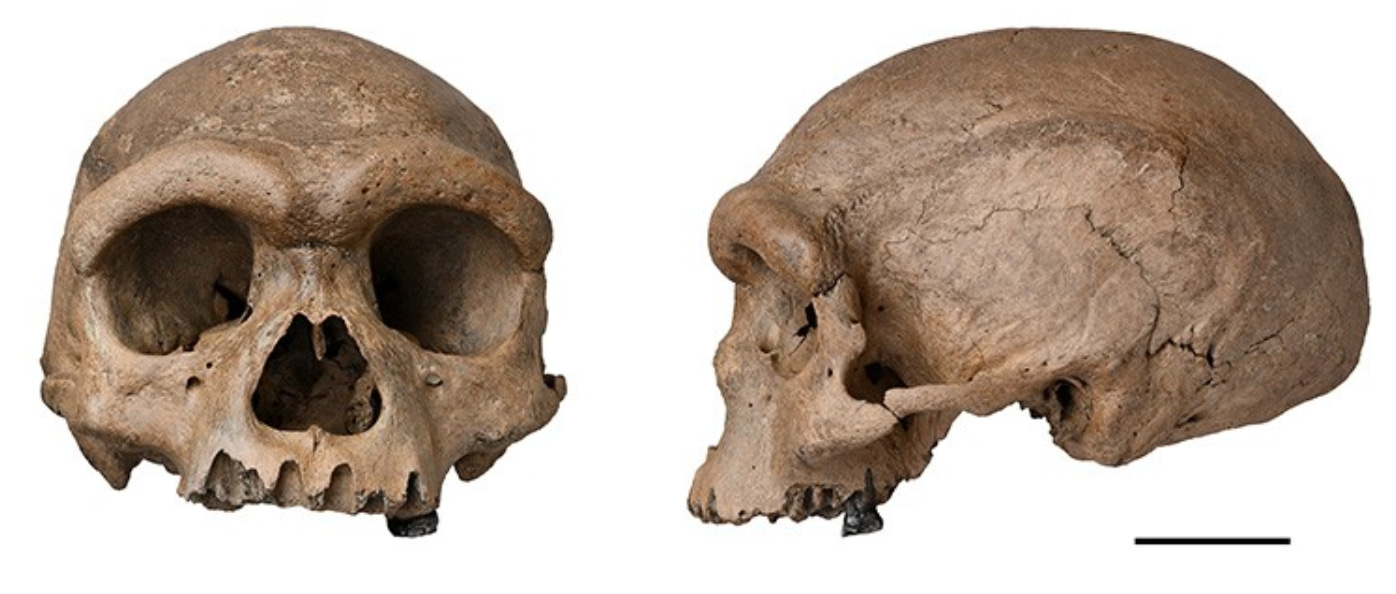We Finally Have an Intact Denisovan Skull
Scientists have long believed the infamous Dragon Man was a Denisovan individual, and now they have proof
Hiya!
We may be the only human species to walk upon the Earth today, but that hasn’t always been the case. Thousands of years ago, our Homo sapiens ancestors coexisted with at least four other Human species, including Homo floresiensis (The Hobbits), Homo luzonensis, Homo neanderthalensis (the Neanderthals), and Homo longi (the Denisovans).
Moreover, our Sapien (as I shall henceforth refer to our species) ancestors interbred with at least two other species listed above, as evidenced by the fact that many humans today still carry the DNA of our Neanderthal and Denisovan cousins.
Of the two, we know far more about the Neanderthals than we do about the Denisovans. A major reason is that, like us, the Neanderthals buried their dead, which helped preserve their remains. As a result, one of the biggest missing pieces is that we don’t know what the Denisovans looked like because we’ve never found a full set of their remains, not even a complete skull — until now.
We still don’t have a complete Denisovan skeleton, but recent dual studies confirmed that a mysterious skull of previously unknown origin is likely a Denisovan.
The Denisovans
In 2010, deep within Siberia’s Denisova cave, archaeologists unearthed a small finger bone that belonged to a previously unknown branch of our Human family tree.
Genome analysis of the tiny bone revealed it didn’t belong to a Sapien, nor a Neanderthal, but another Human species that shared a common ancestor with both. Perhaps even more surprising than discovering a new Human ancestor, the genetic evidence showed our Sapien ancestors interbred with them.
The scientists named our newly discovered cousins the Denisovans, after the cave where the finger bone was found.
In the years since, archaeologists have unearthed the remains of both Sapiens and Neanderthals in the Denisova cave, too. It’s also believed that our three species coexisted in the cave at the same time. In addition to dating the remains, experts found fossils in the cave belonging to a child who had one Denisovan and one Neanderthal parent.
Today, populations in Melanesia and Southeast Asia, particularly people with Papua New Guinea ancestry, carry up to 6 percent Denisovan DNA.
While genetics tells us a lot, scientists had only a handful of super old bones, mostly fragments at that, to work with. So, after learning about our genetic connection and history with the Denisovans, researchers began searching for other potential Denisovan fossils in museum collections and the field.
Archaeologists have had some success, too. For instance, I recently told you about two jawbones that have been officially identified as belonging to Denisovans.
Yet, while many more already discovered fossils are suspected to be Denisovan, most haven’t contained enough evidence to prove it. Further, the fossils that experts have confirmed as being Denisovan don’t provide much new information about their appearance.
However, two new studies potentially identified not just any Denisovan bone, but a mysterious, nearly complete skull known as the Dragon Man.
Dragon Man
I’ve written about the Dragon Man before, a 146,000-year-old, nearly complete skull found near Harbin, China.
The unusual skull resembles a human, but not a Sapien like us, and so scientists named the mysterious species Homo longi, after the area it was found — Long Jiang, which translates to “dragon river.” In Mandarin, “long” means “dragon,” and thus the nickname “Dragon Man” came about.
Still, the nickname befits the skull perfectly as it possesses a sort of mythical quality, both in its unusual appearance and its known history that I’ll let Maya Wei-Haas of National Geographic tell you about:
“The strange skull appeared soon after the Japanese invaded northeast China in the early 1930s. A team of locals was raising a bridge near Harbin, a city in China’s northernmost province, when one of the workers stumbled on a surprise in the river mud.”
“Perhaps aware of the magnitude of the find, the man secreted the skull away in an abandoned well.” […] “Before his death, the worker who found the skull disclosed his long-held secret to his grandchildren, who ventured to the well to retrieve the prize in 2018.”
The grandchildren then turned the skull over to the Hebei GEO University in Shijiazhuang, Hebei, China, to study.

I looked for a reliably sourced image comparison between the Dragon Man skull and our Sapien skull, but couldn’t find one. Still, as you can see in the image above, the Dragon Man skull is usually stout and large, with thick brow ridges and square eye sockets, but with a similarly sized brain as ours.
Based on these features and more, experts believe the Dragon Man was likely a huge male with a strong brow, heavy upper jaw, flat cheeks, and a round nose.
In the few years since the Dragon Man resurfaced, many researchers hoped and hypothesized that the skull would quickly be identified as a Denisovan. Unfortunately, every attempt to collect usable DNA from the robust skull was unsuccessful — but then scientists got creative.

